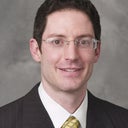I recently had my third "touch up" for a fat transfer procedure where fat was injected into the tear trough areas under my eyes. In the past, the result has been great for a week or two, and then it goes away. Is there anything I can do as a patient (e.g., no alcohol consumption, avoiding movement in the area) to increase the survival rate or take rate of the fat transferred?
Answers (9)
From board-certified doctors and trusted medical professionals

Dr. Ron Shelton, MD
Dermatologic Surgeon, Board Certified in Dermatology
Answer
More Facial Fat Transfer Questions
See all Facial Fat Transfer Q&AWE SEND PRETTY
EMAILS
What’s trending? Who’s turning heads? Which TikTok myths need busting? We’ve got you. No fluff, no gatekeeping—just real talk. Get our free, unfiltered newsletter.




